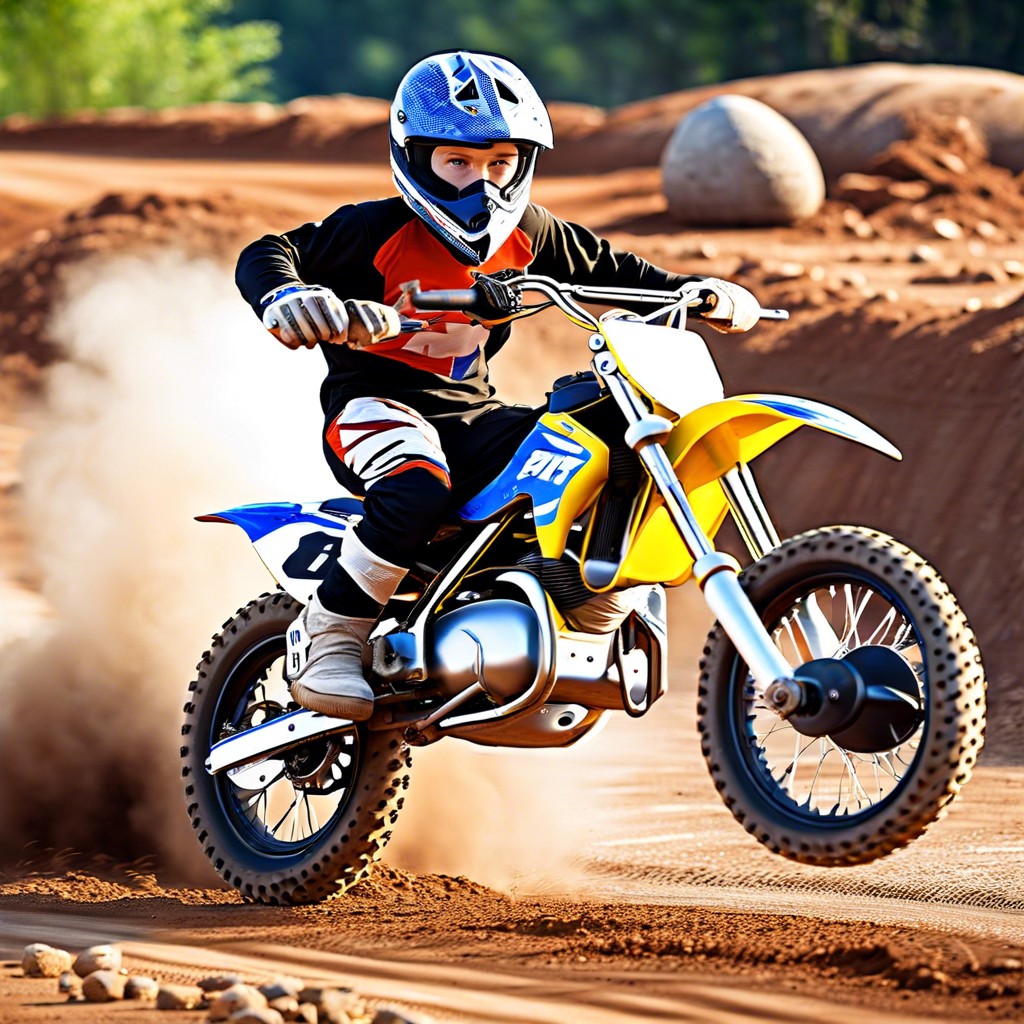A pit bike is a small, off-road motorcycle originally used for navigating the pits at a race track, which you will learn more about in this informative article.
Key takeaways:
- Pit bikes are small, lightweight motorcycles for off-road use.
- They have engines ranging from 50cc to 150cc.
- Pit bikes are ideal for beginners and stunt riding.
- They are used for racing and recreational off-road riding.
- Safety gear and regular maintenance are crucial for pit bike riders.
Definition of a Pit Bike

Pit bikes are small, lightweight motorcycles designed for ease of handling and maneuverability. Originating from the vehicles used to navigate the pits at motocross events, they are a scaled-down version of full-sized dirt bikes. Typically, pit bikes have an engine size ranging from 50cc to 150cc, much less than their larger counterparts.
Their compact size is one of their defining traits, making them accessible to younger riders and suitable for confined spaces. Despite their diminutive stature, they’re built to withstand rough, off-road conditions with rugged frames and knobby tires. Ideal for beginners, pit bikes offer an excellent platform for learning the fundamentals of motorcycle riding. They’re also popular for stunt riding thanks to their light weight and responsive handling.
Pit Bike Size & Design
Pit bikes are smaller than their full-size motocross counterparts, making them more manageable for younger riders and convenient for casual use. Typically, they feature a 50cc to 150cc engine, offering enough power for thrilling rides while maintaining control. The compact frame and lighter weight contribute to their agility, allowing riders to navigate tight spaces with ease. Seat heights can range from 24 to 33 inches to accommodate a variety of riders, ensuring a comfortable and secure riding position. The wheels are proportionally smaller, with 10 to 14-inch rims being common, optimizing them for pit racing and maneuvering around the paddocks. Suspension systems are tailored for less intense jumps and bumps, compared to those designed for high-impact motocross action. Despite their small stature, pit bikes are built with durability in mind, possessing robust frames and often featuring the same type of plastic fairing materials used in larger dirt bikes for reduced wear and tear.
Usage Context: Racing and Recreation
Pit bikes originated within the racing scene, serving as convenient transportation for riders and crew navigating the pits—the area where racing teams prepare and rest between events. Their compact size and agility facilitate easy movement amidst tight quarters, allowing for quick errands or equipment checks.
Beyond the race circuits, their appeal spills over into the broader world of recreational riding. These bikes are not limited to the race tracks; they have become a favorite among enthusiasts for casual off-road riding. The approachable scale makes them ideal for beginners to learn basic off-road skills before transitioning to larger, more powerful bikes.
Increasingly, pit bikes are starring in dedicated racing events, where competitors test their prowess on scaled-down tracks. The small-scale courses challenge riders with tight turns and small jumps, honing precision and control. This competitive angle has fostered a community of riders who specialize in pit bike racing, with modifications and tuning catered specifically for performance.
In recreational settings, pit bikes enable riders of all ages to enjoy off-road experiences without the commitment of a full-sized motocross or trail bike. Their lower power output and smaller wheels offer a less intimidating platform for novices, while still providing the potential for advanced riders to perform tricks and enhance their skills within a smaller footprint.
Safety Considerations
While pit bikes may be smaller and seemingly more manageable than full-sized motorcycles, utmost attention to safety is crucial. Proper protective gear is non-negotiable; helmets, gloves, knee and elbow pads, and appropriate footwear safeguard riders from common injuries. Beginners should invest time in learning basic handling skills and ride within their capabilities, gradually advancing as proficiency improves.
Understanding the bike’s mechanical aspects also contributes to safety, ensuring that brakes, tires, and suspension are in optimal condition before hitting the track. Finally, while riding, maintaining a keen awareness of surroundings and other riders helps prevent collisions and accidents. With safety as a priority, pit bike riding can be an enjoyable and secure activity.
Pit Bike Maintenance and Care
Regular maintenance ensures your pit bike’s longevity and optimal performance. Achieving this involves routine checks and timely interventions:
- Engine oil: Replace it after the first five hours of use, then every 20 hours. Maintaining clean oil is crucial for engine health.
- Air filter: Clean or replace the air filter frequently, especially if riding in dusty conditions, to prevent debris from entering the engine.
- Chain tension: Check and adjust the chain slack regularly. Too tight or too loose can cause wear on the sprockets and affect performance.
- Tire pressure: Incorrect tire pressure affects handling and tire life. Refer to the manufacturer’s specifications and adjust accordingly.
- Brakes: Inspect brake pads for wear and ensure the brake fluid is at the recommended level. Proper functioning brakes are non-negotiable for safety.
- Bolts and fasteners: Vibrations can loosen them over time. Periodically ensure all are tight and secure.
- Battery: If your pit bike has an electric start, maintain the battery charge and check connections.
Adhering to these points keeps your pit bike in top shape, allowing it to serve as a reliable companion whether you’re on the track or navigating the trails.